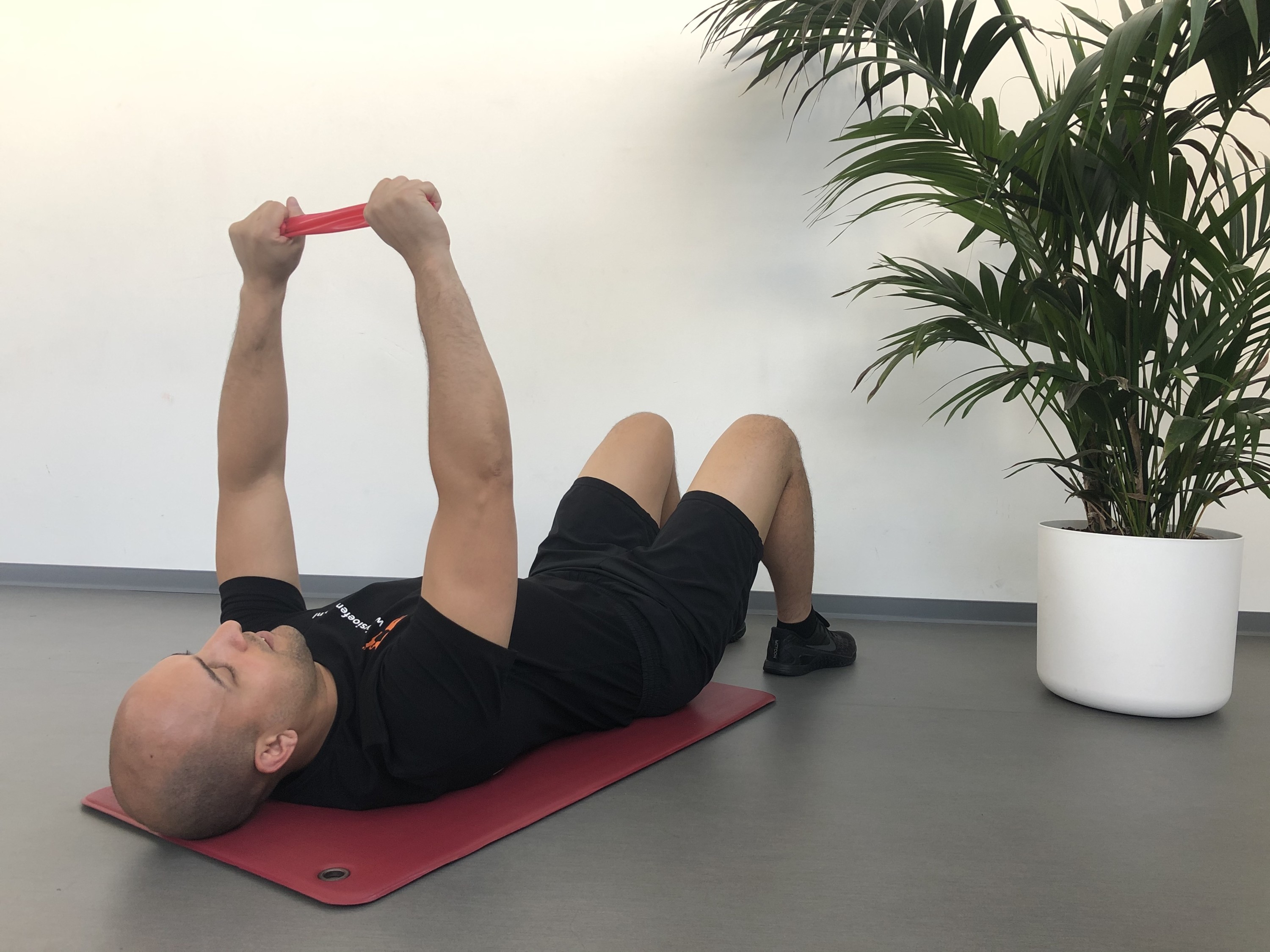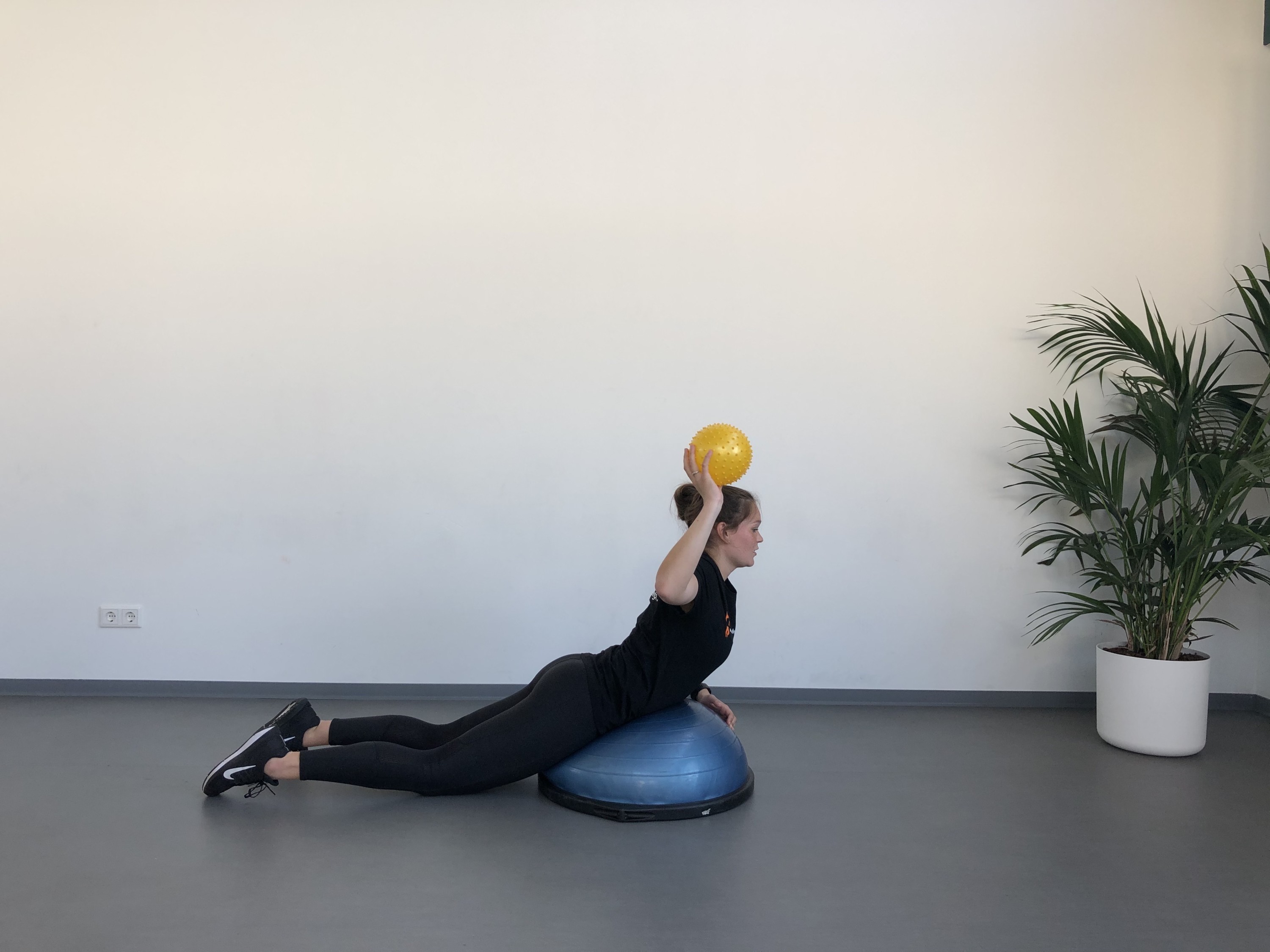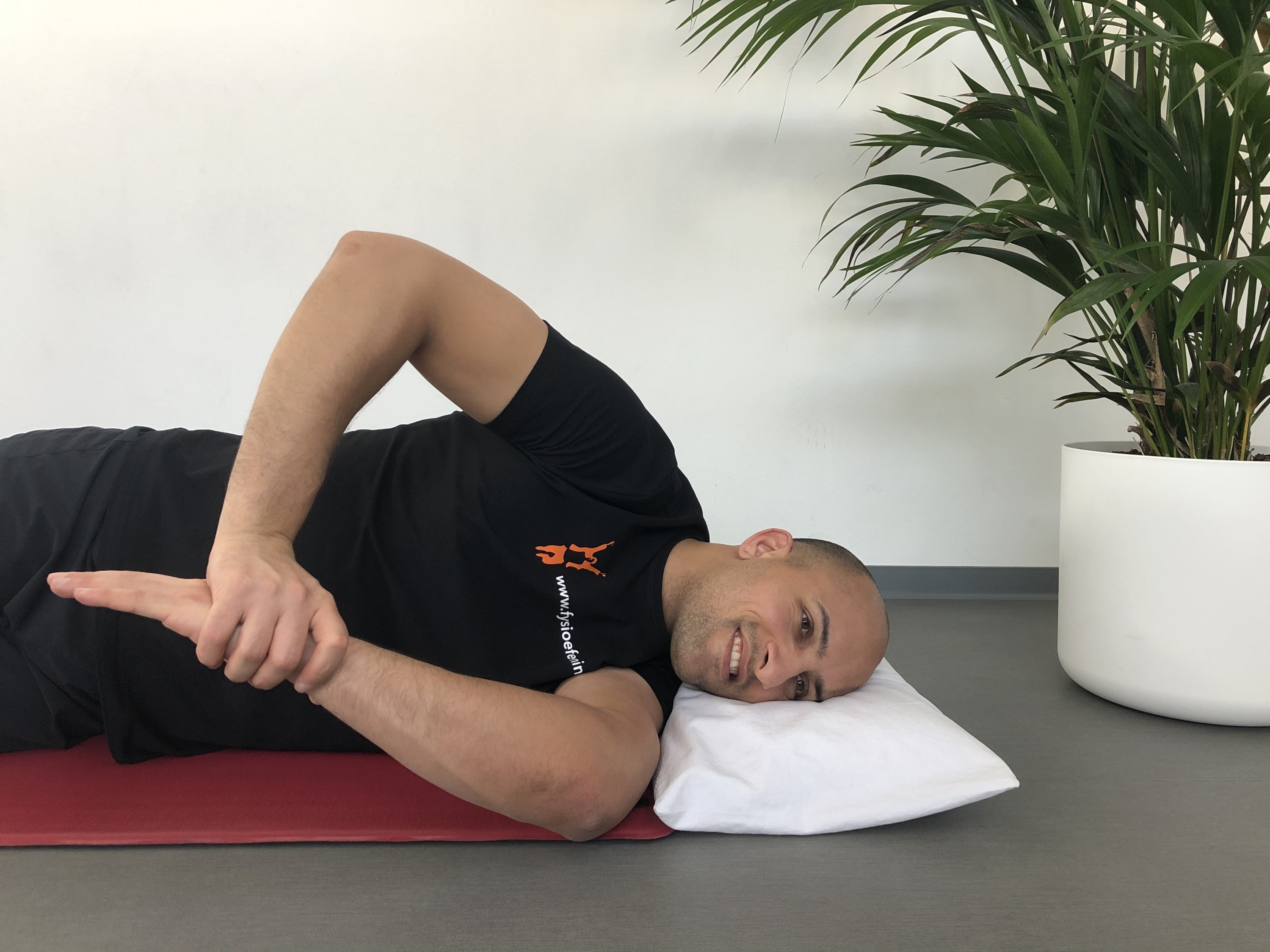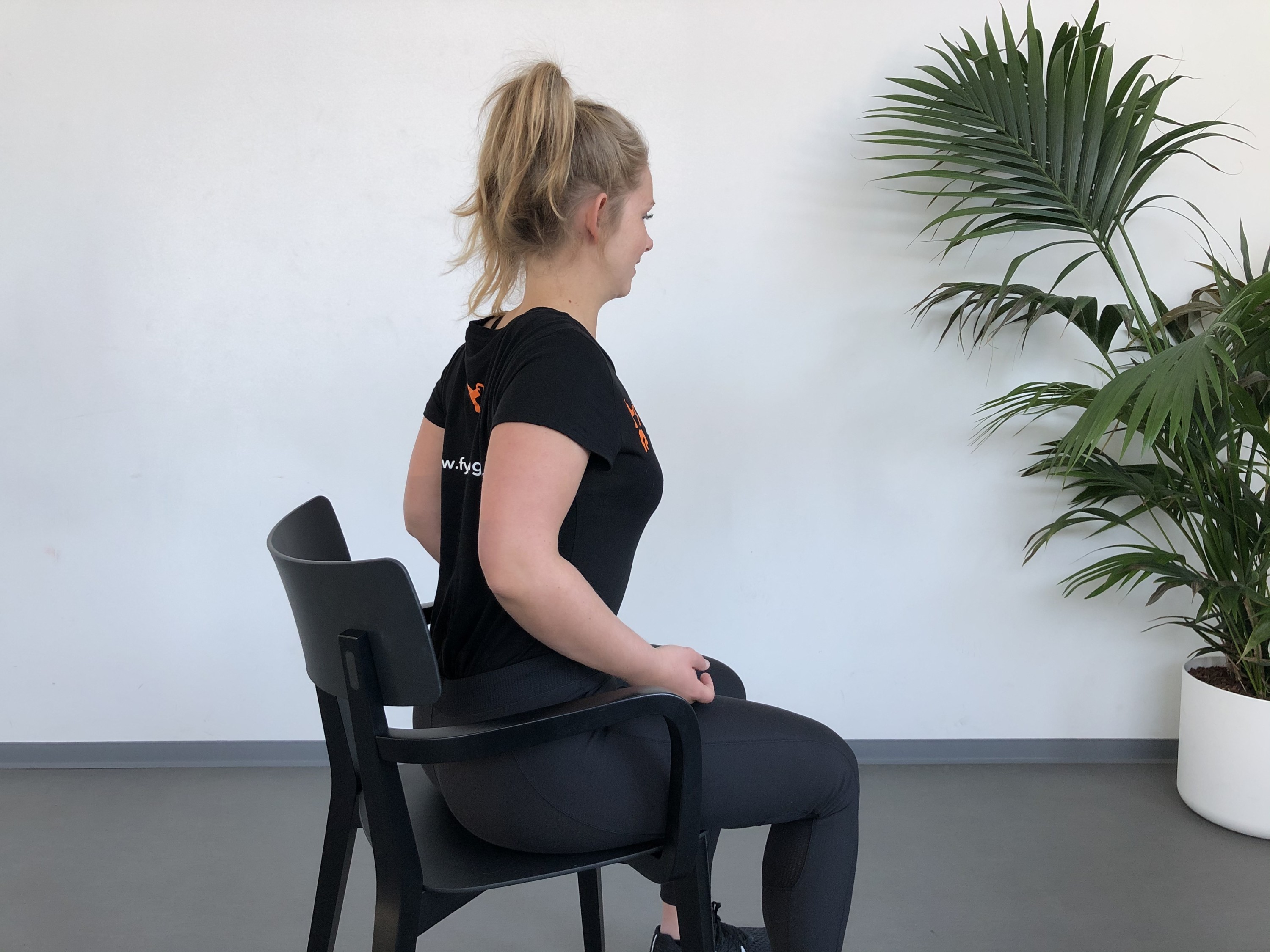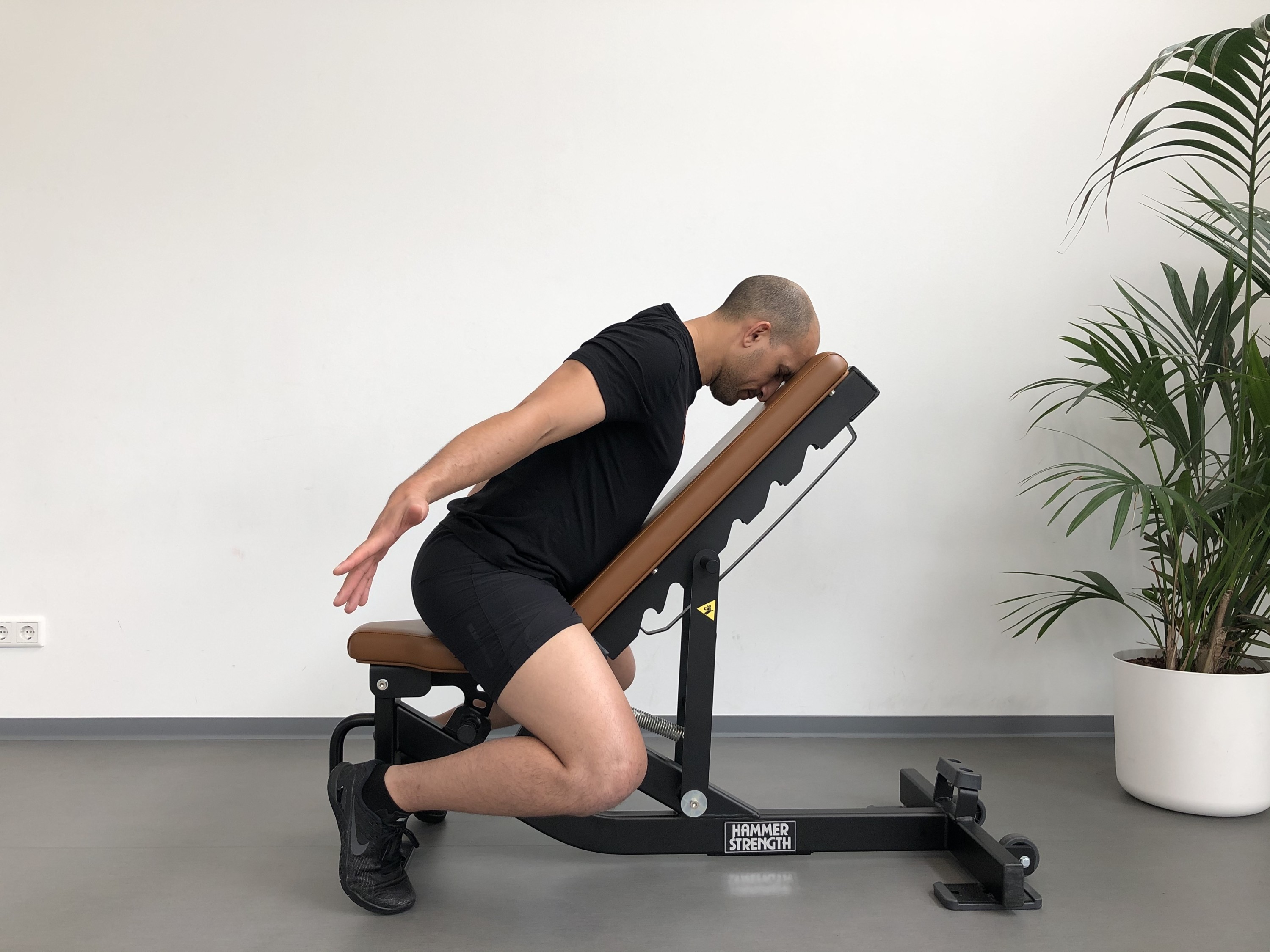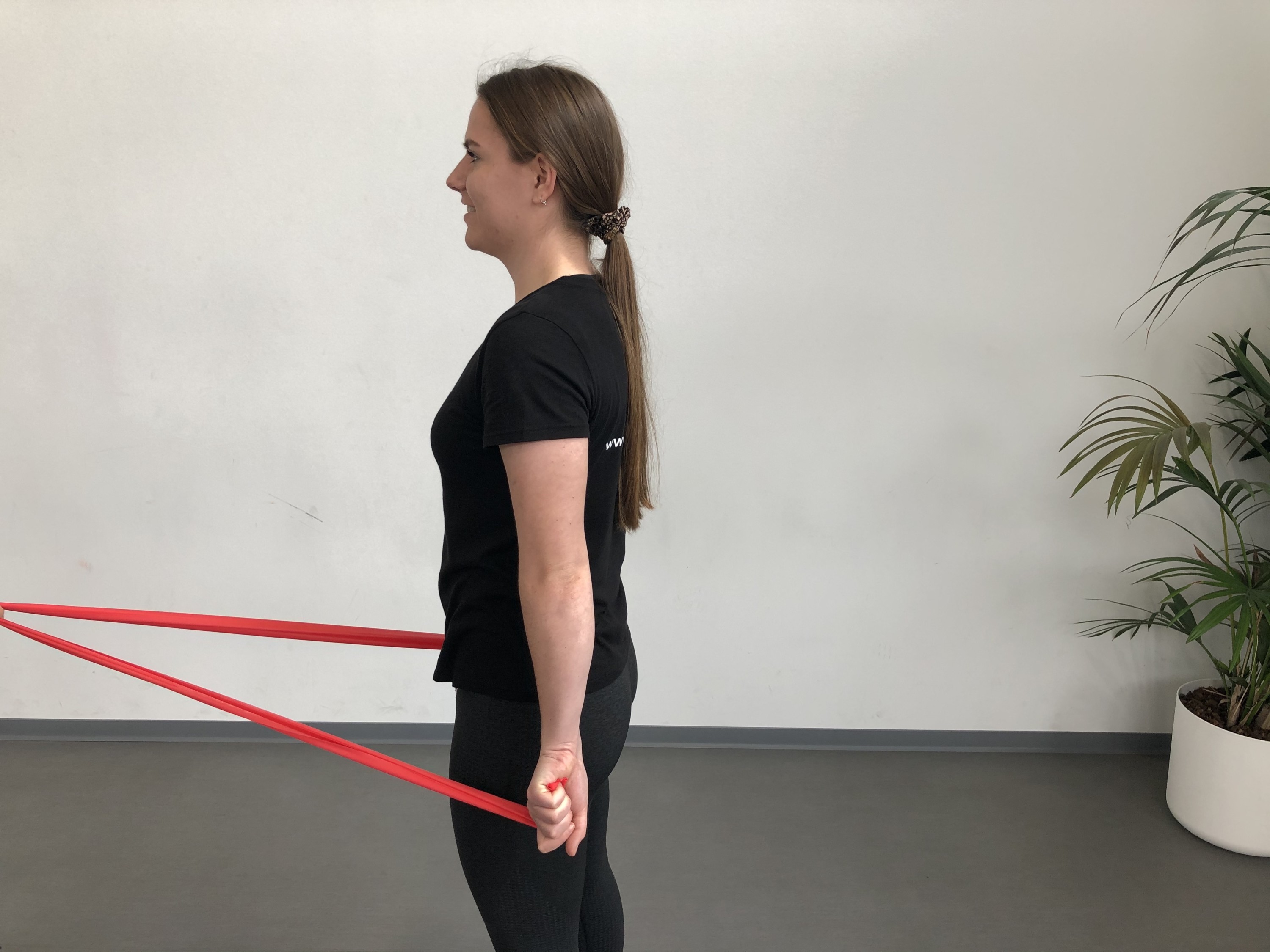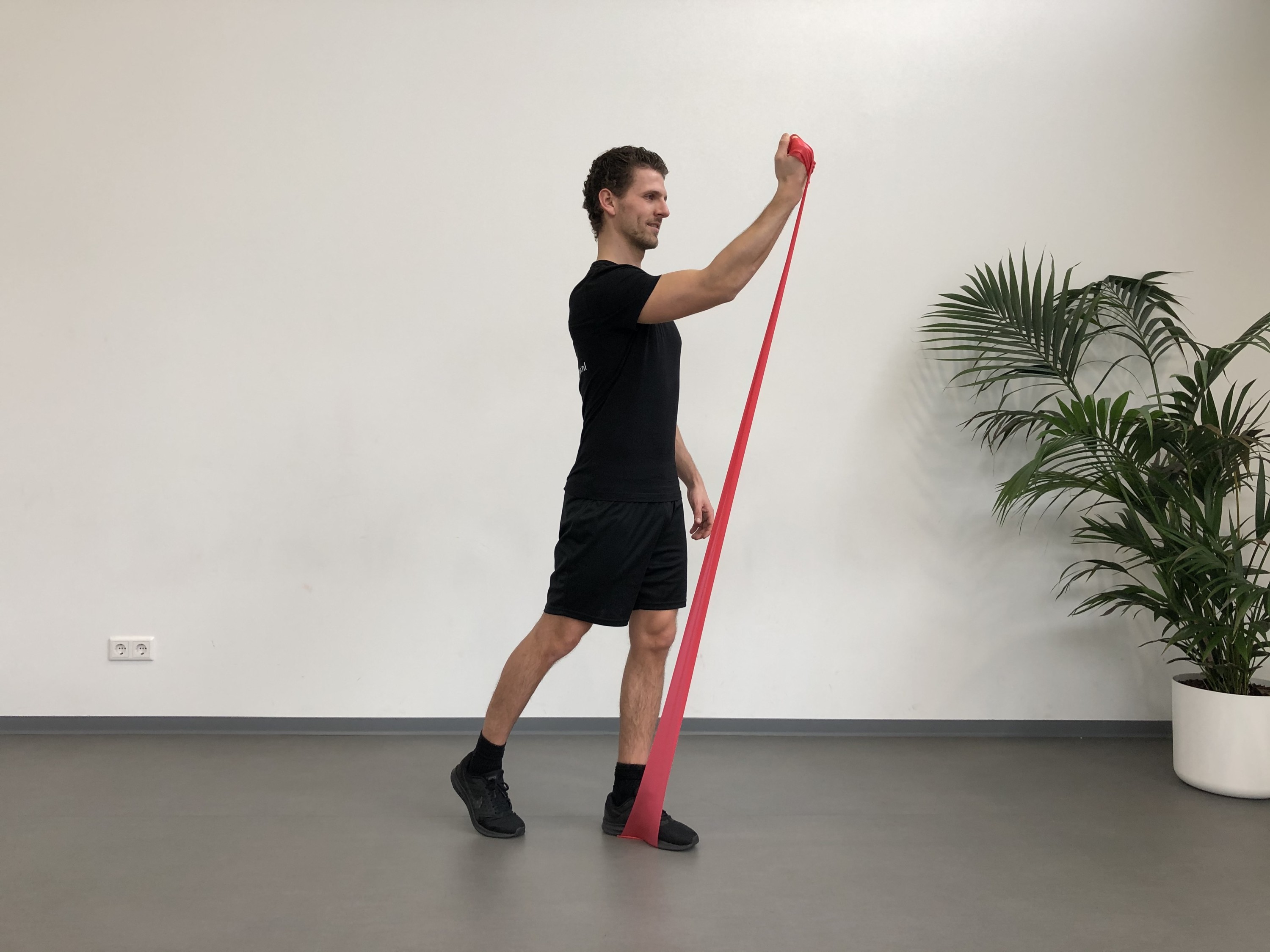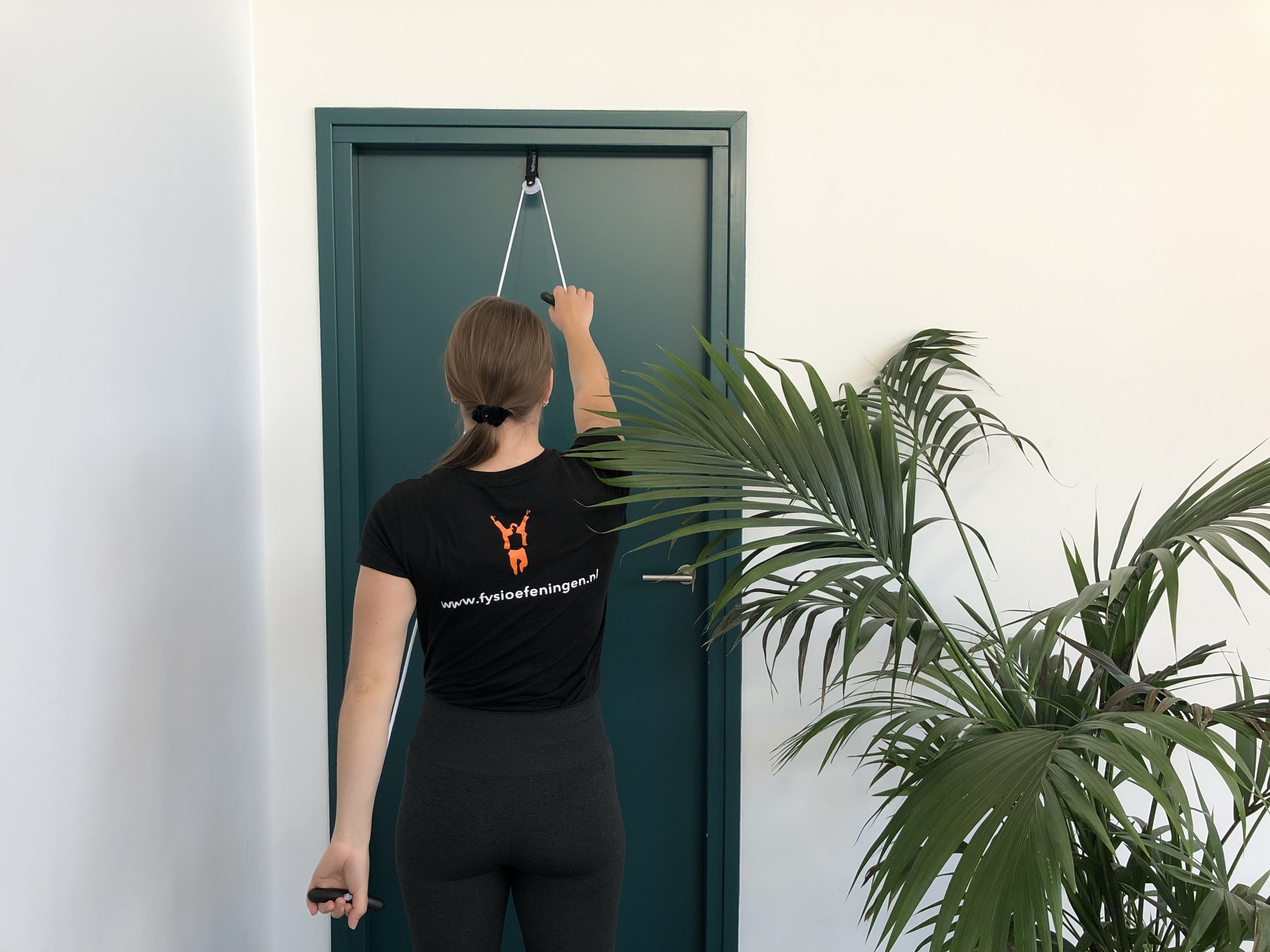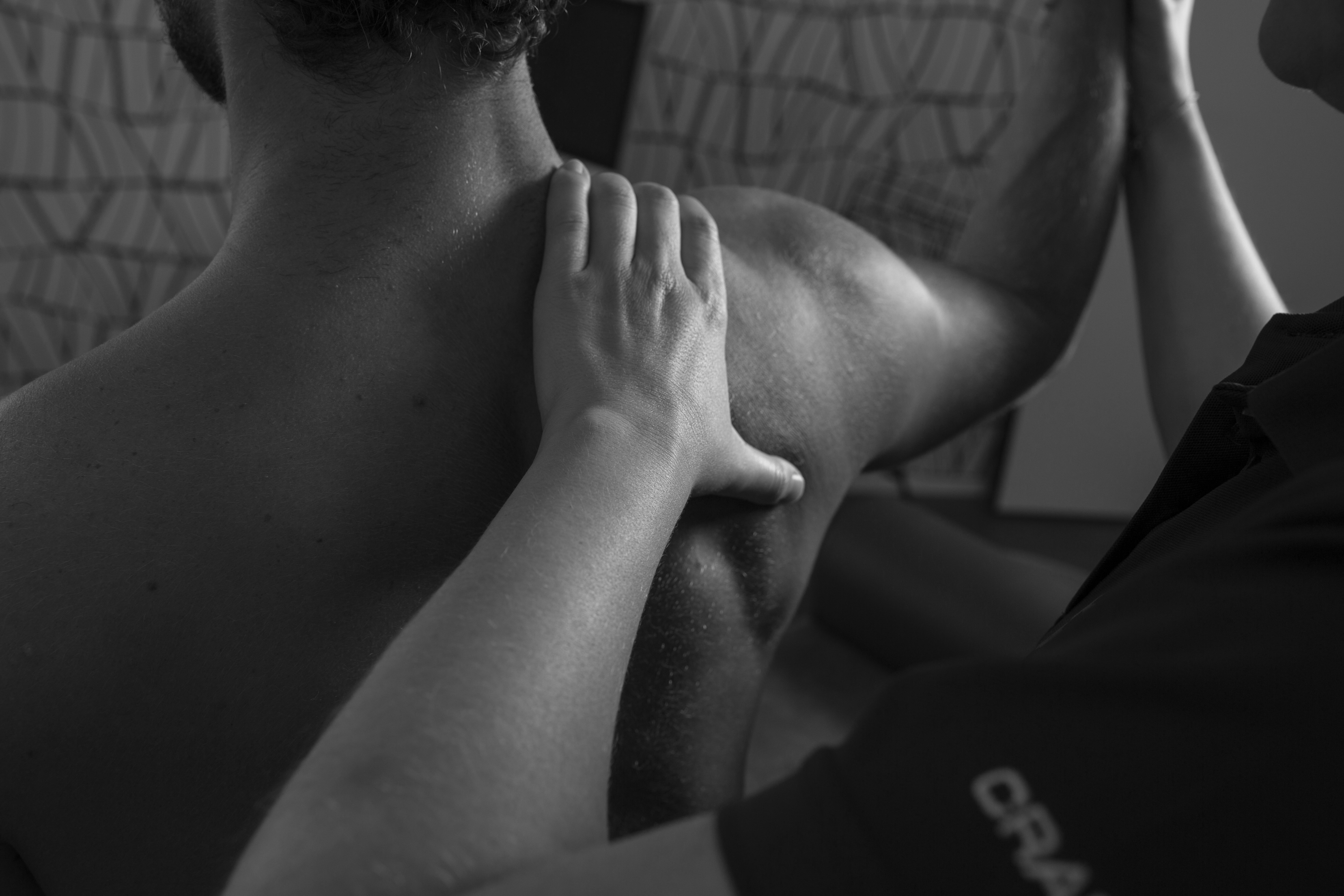
The Shoulder
The shoulder joint is a very mobile joint. A wide range of motion is possible in all directions. This is necessary in view of the many daily actions we do with this joint: bringing something to the mouth, combing hair, going to the toilet, lifting a bag, etc. The shoulder joint consists of the upper arm (humerus) and the shoulder blade (scapula). Surrounding these bones are a multitude of ligaments and muscles that guide and direct movements. Various problems can occur in the shoulder joint. It is important to find out the cause and to treat and train specifically for it.
Resistance band
Hard. Compact. Qualitatively.

Dumbell
Hard. Compact. Qualitatively.

The shoulder
The shoulder joint has a large range of motion. It has a lot of movement in all directions. This is needed for various activities in our daily lives: bringing food to our mouth, combing hair, visiting the bathroom, lifting a bag etc. To cope with all these activities a large range of motion is a necessity.
The shoulder joint is formed by the upper arm (humerus) and the shoulder blade (scapula). The ball is situated at the top of the upper arm. It articulates through rolling and sliding in a shallow socket (glenoid) attached to the shoulder blade. The ball and socket are covered with cartilage; this is a soft slippery layer that helps the bones move smoothly. There are many ligaments and muscles attached to the joint to guide the shoulder movements.
A variety of injuries can impact the shoulder joint. The quality of the cartilage can deteriorate, which is a normal aging process. Torn muscles, bruises, fractures, stiffness and instability can occur due to various causes. It is important to find the cause of the malfunction so that treatment and training can be tailored to the specific injury.
